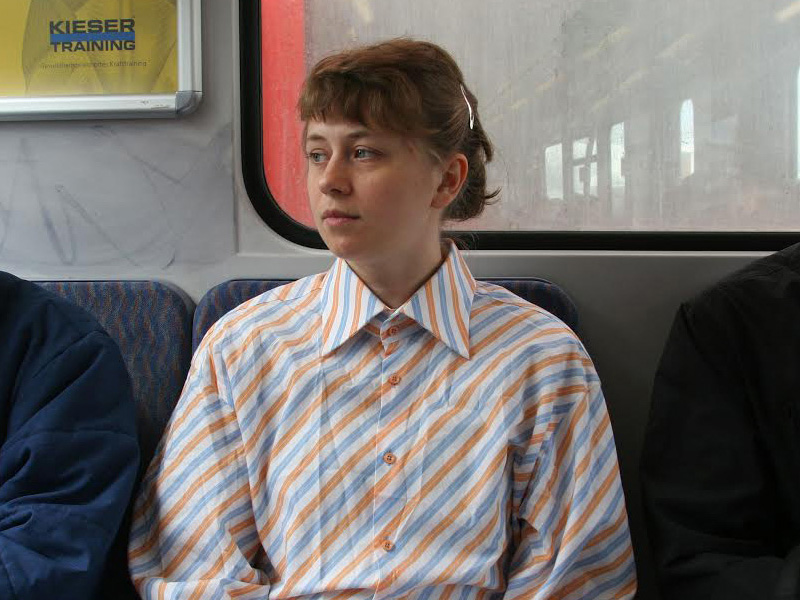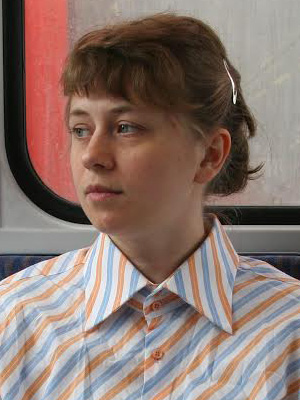One day artist Marina Lindemann noticed her neighbor Sunny O.’s mailbox was overflowing with bills, advertising brochures, and personal mail. As far as she knew, the man who was about 40 years old had left his apartment in the Hamburg suburb of Wilhelmsburg without saying goodbye to anyone. She took the contents of the mailbox to keep them for later.
Where had he gone? Did he decide to start a new life somewhere else? Or did something serious happen to him? After half a year the apartment was finally evacuated. The car that had been parked in front of the house was taken away. Marina decided to gather everything that had belonged to her missing neighbor. So she put on a wig and went in disguise to the auction of Sunny’s boxes, buying them for a few euros without having any notion of the contents. Out of practical considerations, she didn’t take the refrigerator and bed. She took the four big boxes home, inventoried the items, measured and weighed them, and prepared them for an exhibition. “I was hoping to come closer to the disappeared person, and to examine the relationship between things and personality,” Marina told me. “How much of a person is there in a thing?,” she asked herself.
The project drove her to her psychological limits. It was an arduous task and she had to take breaks in between to sort out the often dusty items. There was a microwave, toys, clothing. Some porno files were among the most private remains he had left behind on his computer’s hard drive. She also found an email-address and sent him a message telling him he could contact her about his belongings.
Marina didn’t stop there; somehow assembling the things just didn’t seem enough. She wanted to perform an experiment and assume another identity, if only for a short time, and see what kind of effect this would have on her. At some point she put on Sunny’s clothes and walked the last route she imagined him to have taken near the house, filming it with a video camera. She also asked a friend to put on the clothes and took photos of him going down the stairs, going outside, using public transportation, before disappearing from sight. To me this part sounds like a kind of staged stalking, for lack of a better term. Marina and Sunny had not been close friends; otherwise, I imagined, she might have felt more reluctant to put his possessions on public display. “I felt as if I had put on a mask. I covered a part of myself with a part of somebody else,” she describes the effect this had on her.
I was left with a question. Was “Sunny O.” the man’s real name? The only person I knew by the name “Sunny” was a tall woman who, some 30 years ago, had thrown a glass at me – but fortunately missed – in a Berlin bar for no apparent reason.

When I heard about Marina’s project, I had to think of people who step out of their ordinary lives from one day to another, don’t leave a message and never show up again; of Tim Krabbé’s noir story The Golden Egg about the unexpected disappearance of a woman at a gas station in the south of France and her boyfriend’s ensuing search for her that brings about even more complications (it spawned a very noir Dutch-French movie, The Vanishing and an American remake). The work also made me think about other issues related to leaving and leaving behind. What we take with us is often of our own choosing, but not always. Sometimes we have control and sometimes we don’t. We keep the things that we don’t want others to possess, that mean something to us, that we imagine will help us to keep our memory of something past in the future. Assuming, of course, that we have the ability, time and room to take them with us. The tens of millions of refugees who are on the move today somewhere in the world don’t. And sometimes we are just thoughtless. We throw away things or we forget them somewhere. Sometimes the truth may even lie somewhere in between.
“Since my arrival I have been losing everything: my wallet, my glasses, make-up…I can’t read anything anymore, can’t make myself up and don’t have a purse. We left it all at a rave somewhere downtown.” This is how fashion legend Vera von Lehndorff recently described her visit to the Art Show in Los Angeles in an interview with the Frankfurter Allgemeine Zeitung, a German newspaper. The surprising thing was that she didn’t seem to lament the loss of her things. Instead, she seemed to view the situation as an almost welcome challenge to rethink her relationship with the things. Losing or intentionally getting rid of things may incapacitate us to some extent, but also liberates us, creates space for other things, and yes, triggers change. We don’t know what the one who found her things has made of them.
Other losses are completely beyond our control. We lose about 100 hairs every day and 40,000 skin cells every hour, which adds up to the unbelievable number of close to 1,000,000 every day. Our skin renews itself every two months. The dust in our home is made mostly from dead skin cells. In one year, this adds up to more than eight pounds, of one person. People we are in intimate contact with absorb tiny fragments of us that become part of them, if only for a while. Fingerprints on plastic bags can be identified for up to seven years, researchers have found. Our initials on the bark of a tree will stay there for a couple of hundred years (if the tree is still alive by then). We also leave emotional traces and memories in other people.
And in a culture that increasingly relies on digital media for storing precious information, even deeper issues arise regarding losing and forgetting. One is the fragility of memory and the challenge of avoiding collective amnesia – Abby Smith Rumsey addresses these issues in her recent book When We Are No More – How Digital Memory Is Shaping Our Future.
What will happen to our own digital traces?




